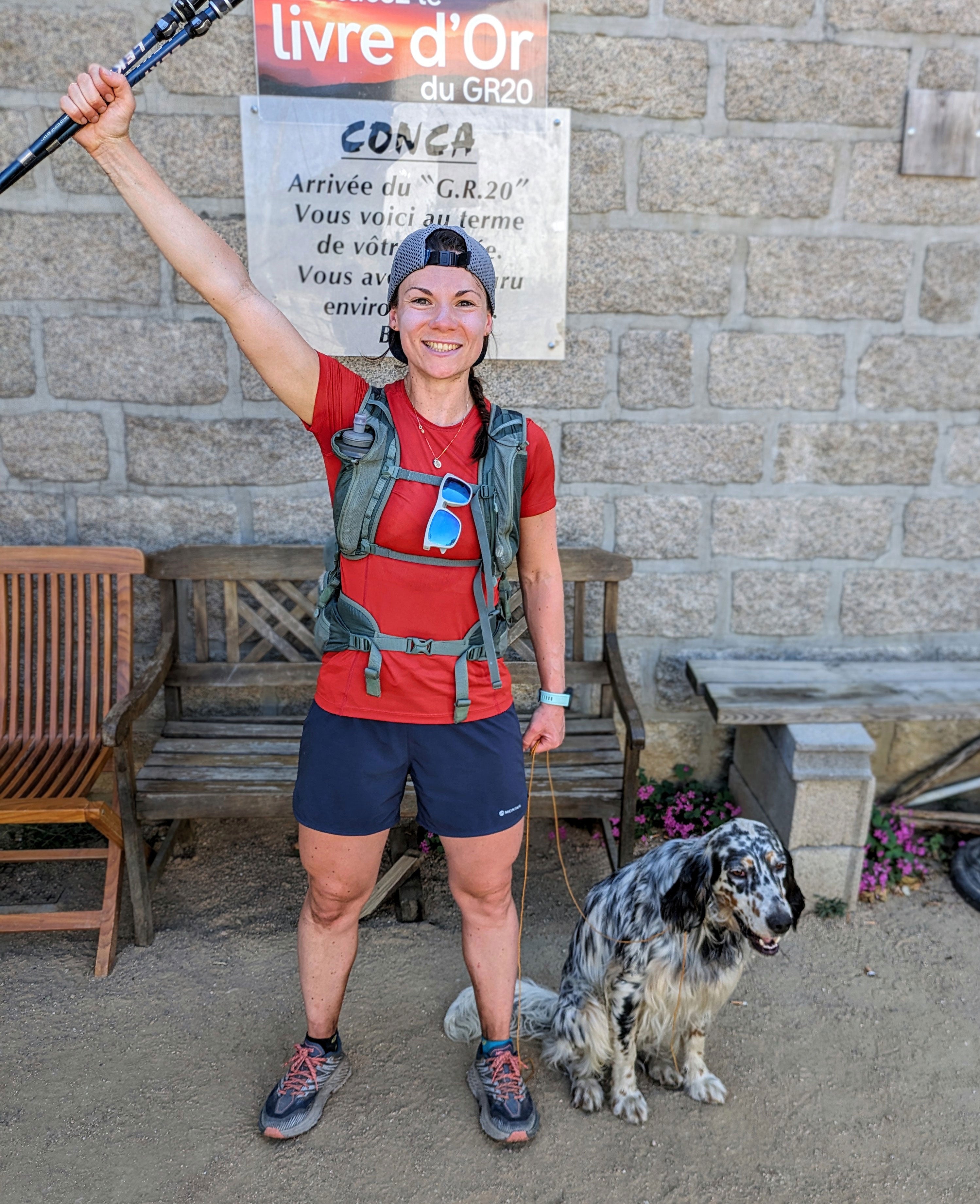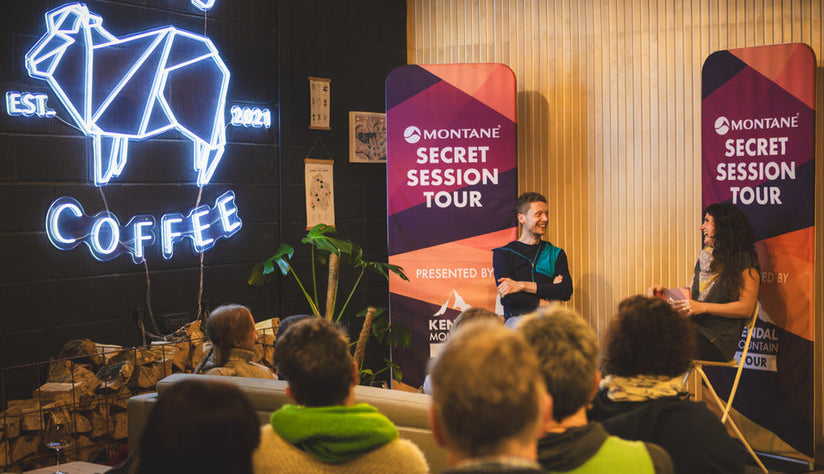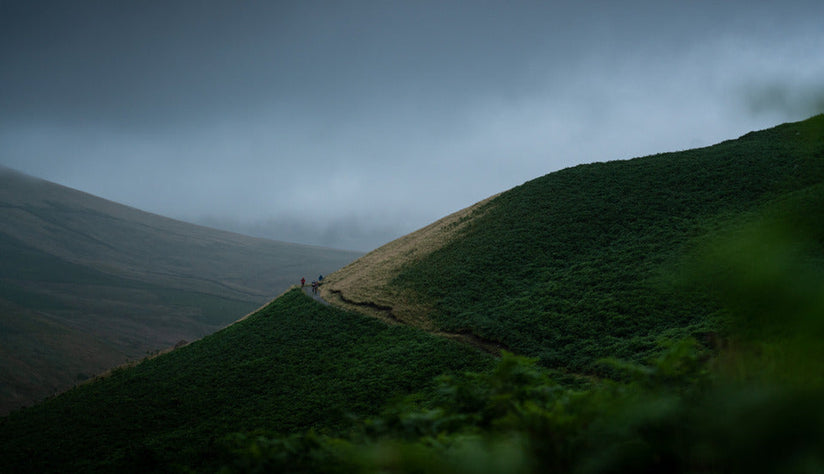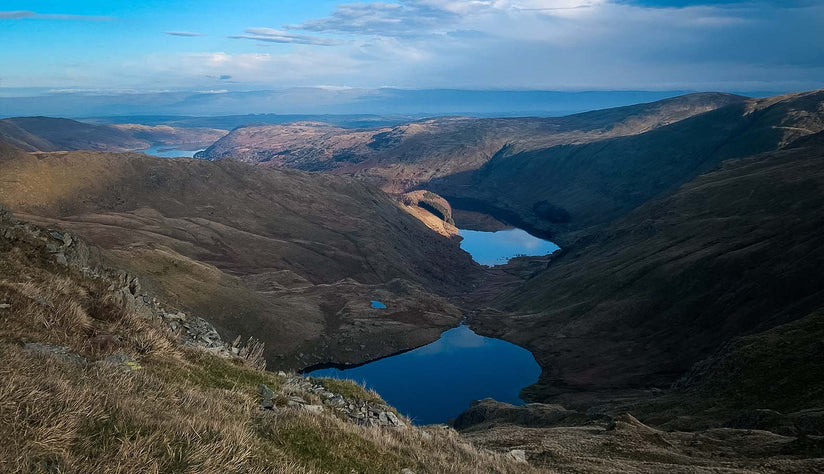Never one to shy away from a challenge, #TeamMontane athlete Katy Parrott set her sights on fastpacking the epic 196km GR20 challenge this summer. The trail, which snakes its way through one of Europe’s wildest islands, Corsica, is renowned as one of the most physically challenging in Europe.
Sounds like an excellent way to get some training in, right? Keep reading to find out how she got on, with just her determination and Trailblazer backpack in tow…

Overview of the GR20
The GR20 is a trail that has fascinated me for a few years – after all, it is described as the ‘toughest walking route in Europe’ and one of the most ‘exhilarating long distance trails in the world’. With the Dragon’s Back Race coming up in September, I thought fastpacking the GR20 would make the perfect training holiday.
The GR20 diagonally runs the length of the extraordinary mountain range that dominates Corsica. The trail is broken down into 15 or 16 stages by mountain huts or refuges and is typically completed a stage a day.
However, I decided to tackle at least 2 stages a day, completing 196km, with over 12,200m of ascent in 8 days. I’d researched the route, the different refuges and looked at many pictures. But none of that did the adventure I was about to embark on any justice! The GR20 was more rugged, more varied, and more phenomenal than I could have imagined.
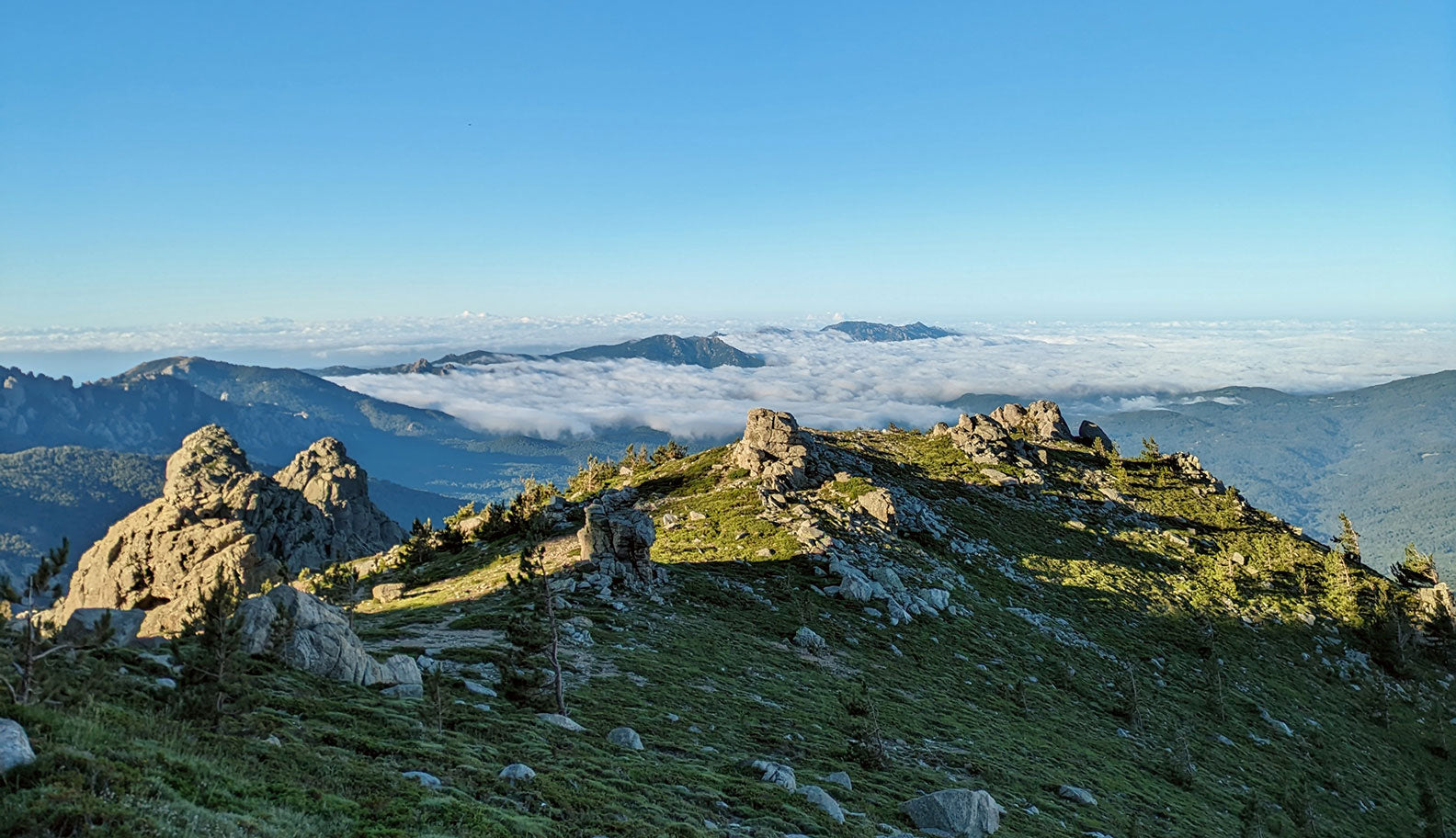
Clothing & Equipment Selection
As I wanted to take on the GR20 fast and light rather than hike with full gear to be self-sufficient, my kit selection was crucial. I decided that the Trailblazer 24L would be ideal for ensuring I could pack all the essentials (including lightweight down sleeping bag), but also small and comfortable enough to be able to fastpack. The various pockets on the front and sides meant that my water and snacks were easily accessible whilst on the move.
The Dart Lite base layer was the ideal choice of T-shirt – short sleeved for the day and long-sleeved for the evenings. They are ridiculously lightweight, pack down to nothing and dry extremely quickly, which was useful when having to hand wash them after a sweaty day in the mountains ready to wear again the next day!
The final item in my top 3 pieces of kit for this adventure was the Phase Lite Gore-Tex waterproof jacket. I packed it as a ‘just in case’ emergency piece of kit. But turns out it played a vital role in some rather unexpected crazy weather conditions!
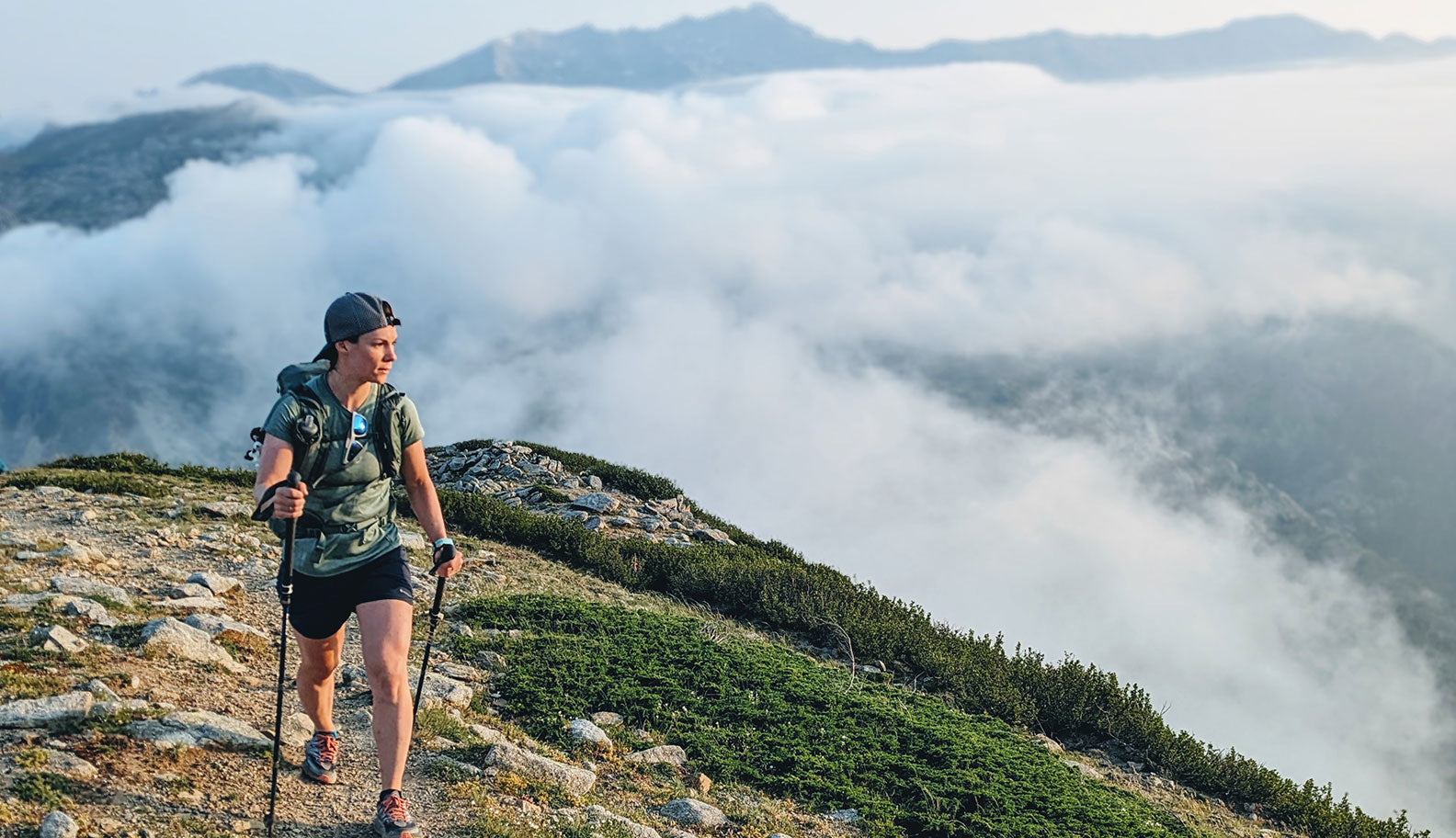
Refuges and food
As I opted to travel light, I didn’t take my own tent, cooker, or a huge amount of food. And actually there’s no real need to. I had pre-booked to either stay in a dorm in the refuge or a pre-pitched tent at the refuge sites. After a couple of nights in each, I decided that I actually preferred to stay in the tents. A few fog horn snorers and 0300 alarms in the refuge dorms meant I didn’t particularly sleep very well sleeping in them. My lightweight 1-2 season down sleeping bag was more than sufficient for both sleeping options.
For food, I took my own Resilient Nutrition energy protein bars, nut butters and a few porridges, and then heavily relied on the food at the refuges. They generally mass cook a 3-course dinner for all the hungry hikers to tuck in to in the evenings for around €20 – usually a mountain of pasta! Some refuges offer a breakfast which was usually just bread and jam, and others I would just have to buy whatever I could from the shop. I ended up eating a huge marble cake for breakfast on two mornings after I had run out of porridge sachets. I didn’t ever go hungry, but I did worry I was going to turn into a baguette if I ate one more!

Highlights – the route
The trail is broken into two halves – the north and the south - and can be completed in either direction. I had read that the north was more rugged and challenging than the south so I decided to start there when me and my legs were fresh! The reviews and blogs were not wrong! My friend Lily-Mae joined for the first 6 days and it was great to have company on such technical terrain.
In the first two days we had completed 5 stages, over a distance of 45km, with 4250m of ascent. This included climbing up chains, scrambling along knife edge ridges, sliding down scree slopes, and a tiny bit of running on the few trails that even slightly resembled trails. On our second day, the first 5km had over 1200m of ascent! However, making it to the highest ridge (over 2600m) on Corsica to see snow, hidden lakes and phenomenal panoramic views was absolutely worth the 0500 start.
The next couple of days were probably my favourite. The variety of terrain you can encounter in just a day is like nothing I had experienced before. Starting on aggressive moon-like ridges, passing mountain lakes nestled in green meadows with wild horses, and finishing in what felt like a tropical forest with huge boulder pools for wild swimming in the rivers - I was genuinely in awe of the landscapes and excited to see what the next kilometers would deliver. And the GR20 just kept delivering surprises in all sorts of forms.
After passing the halfway point at Vizzavona, one of those surprises really hit us! I was warned about the potential for tropical style storms, but the forecast had been good in the week leading up to my adventure. However, on day 6 the weather gods were very angry about something! The rain was insane, but paired with the thunder and lightning, made it quite exciting to run along the trails like a drowned rat. I decided that my kit was more important than me so I covered my pack with my Phase Lite rather than wear it, and everything remained wonderfully dry!
After the rain had stopped at mid morning, I was given a welcome hour of sun to help dry me out. Unfortunately this was short lived and then the weather gods delivered more delightful surprises, in the form of 80kmph winds and about 10m visibility for the next 24hrs. These conditions were far from ideal, whilst zigzagging over yet another knife edge ridge on my own.

The trail is extremely well marked with the infamous white and red stripe, painted on rocks or trees. The marks generally appear every 10-30m. You definitely need to keep your eyes peeled for them though, as there often isn’t a clear trail. If I hadn’t seen a marker for more than 50m, I started to worry that I had taken a route or turn. This definitely happened a couple of times when I was engulfed in clouds during days 6 and 7. However, I loved the wild and rugged nature of this route, as it certainly kept me on the toes and kept me guessing. I knew there wasn’t any room for complacency with the GR20!
My final day, and the remaining 28km, were incredible. I opted to take the ‘alpine variant’ first thing, which is a higher and far more technical route than the classic GR20. It did not disappoint. I was scrambling along, up and through a jungle of impressive rock formations, with incredible views all around – the sun had finally reappeared! After my second breakfast (which became my daily routine) I was on the home straight.
Only a few small mountains stood between me and the finish at Conca. Then the final surprise the GR20 had to throw at me appeared – a lost dog with severe heat stroke, 7km from the town. The poor pooch was extremely unwell and unable to move, so myself and a few others carried him 1km down the mountain to the nearest river to cool off and drink. We then made him a lead and slowly walked the remaining 6km to Conca where we reunited him with his owner. Saving the dog was the perfect end to an epic adventure.

Trail breakdown
Here is my day by day breakdown of fastpacking the GR20. I would generally wake up at 0500 and aim to be moving by 0600. The earliest I arrived at my evening location was 1400, and the latest was 1830, depending on distance covered and height gain. I made the effort to always look back where I had come from. It was so satisfying to see the scale of the dramatic landscape I had covered and think ‘wow, I’ve just climbed up and over those mountains’.
-
Day 1: Calenzana to Asco – 28km – 2400m ascent
-
Day 2: Asco to Refuge de Ciottulu di I Mori – 17km – 1850m ascent
-
Day 3: Ciottulu di I Mori to Manganu – 26km – 830m ascent
-
Day 4: Manganu to Refuge de l’Onda – 20.5km – 1300m ascent
-
Day 5: Refuge de l’Onda to Capanelle – 24km – 1620m ascent
-
Day 6: Capanelle to Refuge d’Usciolu – 31km – 1910m ascent
-
Day 7: Refuge d’Usciolu to Refuge d’Asinau – 21.5km – 1125m ascent
-
Day 8: Refuge d’Asinau to Conca – 28.2km – 1190m ascent
Concluding thoughts
The GR20 far exceeded my expectations. I knew it was beautiful and rugged, but I didn’t expect it to be as phenomenal as it was. Every hour of every day was exciting – be it the technicalities of the trail, the unpredictability of the conditions, taking in the breath-taking views, or simply meeting other interesting travellers. I felt well and truly alive immersed in that wild environment.
The GR20 is a genuine hidden gem of an adventure. It’s definitely not for the faint-hearted, but if you are after a challenging route in an incredible landscape, I cannot recommend this trail enough. I can’t wait to investigate other GR trails... watch this space.
Feeling inspired to take on a fastpacking adventure?
If you like the sound of taking on a fastpacking adventure similar to Katy’s but are unsure of where to begin, don’t miss this beginner’s guide to fastpacking from fellow #TeamMontane athlete Jenny Tough.
